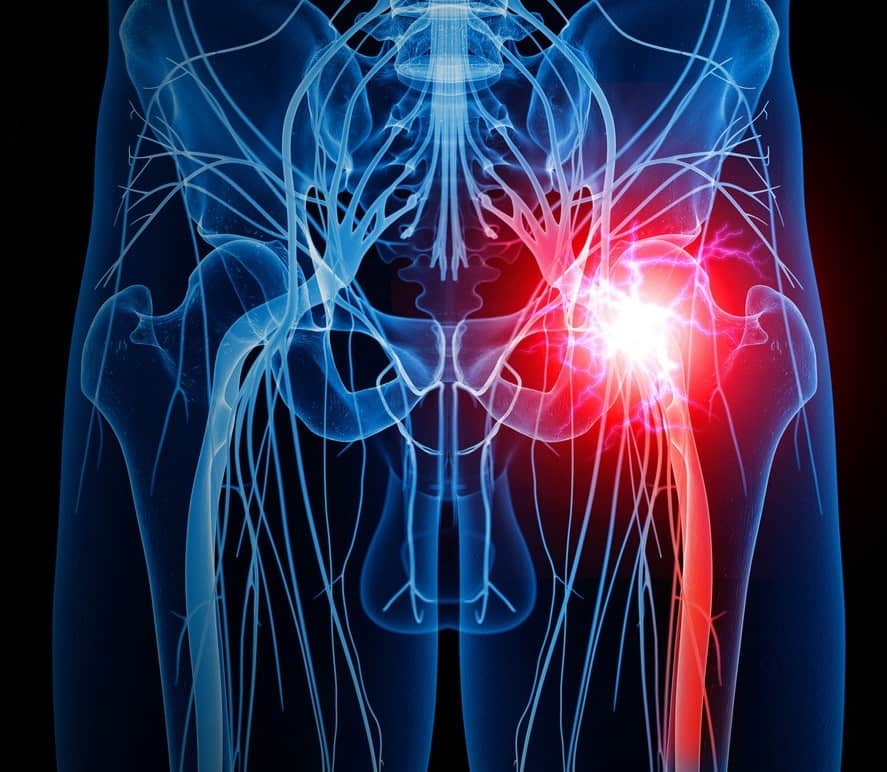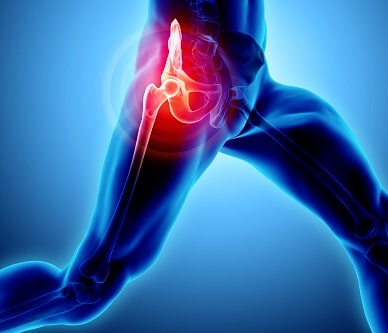PIRIFORMIS SYNDROME
An uncommon painful neuromuscular disorder known as Piriformis syndrome is caused due to contraction or compression of sciatic nerve by piriformis muscle. The most common cause is overuse or trauma from sports apart from other conditions. The condition is also referred to as deep gluteal syndrome, extra-spinal sciatica or wallet neuritis.
The contraction or compression of the piriformis muscle leads to pain, numbness, tingling, and shooting sensations in the buttocks, hips, thigh and legs. The pain can be chronic, a one-time injury or reoccur due to irritation of the sciatic nerve.

CAUSE OF PIRIFORMIS SYNDROME
The piriformis muscle is characterized as a flat, band-like muscle that is located in the buttocks near the top of the hip joint. This muscle is responsible for lower body movement as it stabilizes the hip joint which allows it to lift and rotate the thigh away from the body.
The coordination enables you to walk, shift your weight to another foot, and maintain balance. It is also used in, in almost every motion of the hips and legs like playing sports involving lifting and rotating the thighs.
The sciatic nerve passes alongside or goes through the piriformis muscle and it is a thick, long nerve in the body. The nerve goes down the back of your leg; it eventually branches into smaller nerves till the end of the feet.
Compression of the sciatic nerve by the piriformis muscle leads to spasm leading to the pain in the buttocks and hip.
The compression or contraction can be caused by:
- An injury like fall, sudden blow to the area, or an accident
- Overuse of the muscle due to frequent running, excessive exercise, or overstretching of the muscle
- A sedentary lifestyle with long period of sitting
- Sudden change from a sedentary lifestyle to frequent exercise
- Buttock muscles wasting
- Muscle tension
- Excess weight
- Scar formation
- Hematoma

SYMPTOMS OF PIRIFORMIS SYNDROME
Sciatica is the most common effect of piriformis syndrome. This would cause pain, tingling, or numbness which starts from the buttocks and moves down the back of your leg. This would start as an intense, burning pain settles deep in the buttocks. This would affect the other parts of the body like the back and legs. Some other common signs and symptoms include:
- Numbness and tingling in the buttocks extending down the back of the leg
- Tenderness of the muscles
- Difficulty sitting
- Pain while sitting that gets worse due to longer sitting time
- Pain in the leg and buttocks worsening with activity
The symptoms may worsen after prolonged activities like sitting, walking or running and might get better once you rest or after lying down.
DIAGNOSIS OF PIRIFORMIS SYNDROME
The doctor would review your medical history that includes physical examination and diagnostic tests. The doctor would review that there is a history of trauma to the pain area, repetitive, vigorous activity like long-distance running and prolonged sitting.
There is no definitive test to confirm piriformis syndrome however, sciatica being the most common symptom, doctors would run tests to check the cause behind sciatica nerve compression. They would also run tests to rule out other medical conditions like herniated discs, back sprains, lumbosacral spondylolisthesis and spinal stenosis.
Doctor recommend tests like X-rays (to out bone fractures), CT, MRI (magnetic resonance imaging), electromyography (EMG, neurography or electrophysiologic tests), to determine if the symptoms are due to piriformis muscle compression or other medical conditions.
Magnetic resonance neurography and FAIR (flexion, adduction, and internal rotation) Test helps in providing significant evidence to support the diagnosis of piriformis syndrome.

TREATMENT OF PIRIFORMIS SYNDROME
The treatment regime is decided on three different phases: acute phase, recovery phase, and maintenance phase.
Acute Phase – This phase required rest and initial physical therapy. Doctor would advise you to perform flexion, rotation, and other movements to stretch the piriformis muscle. The soft-tissue massage to the gluteal and lumbosacral areas and cold pack induce electrical stimulation helps in reducing the pain.
Medications prescribed by physicians are NSAIDs (nonsteroidal anti-inflammatory drugs) like ibuprofen (Motrin and others) and opioids like Norco, Vicodin, and OxyContin for severe pain. Muscle relaxants or corticosteroids help in relaxing the stiffness in muscle. If pain doesn’t subside local injection of anesthetics like lidocaine (Xylocaine) and bupivacaine (Exparel, Sensorcaine or Marcaine).
For persistent pain and spasm which do not respond well to anesthetics and corticosteroid injections, botulinum toxin (Botox) injection would help in relaxing the muscle as well as reduce the pressure on the sciatic nerve. Botox is a muscle weakening agent that relaxes the muscle tension.
Occupational Therapy helps in mild to moderate cases to ease spasm and pain occurring in the piriformis muscle. This also helps in avoiding prolonged sitting that aggravates the symptoms. Application of heat helps the piriformis muscle to relax by easing spasm and pain. Some people may find alternate head and cold therapy more helpful than heat therapy alone. Therapeutic ultrasound treatment also helps in reducing pain and easing the spasm.
High frequency sound waves are directed through the skin in ultrasound treatment. This causes a deep heating effect to the piriformis muscle that helps in getting the muscle to stretch out. The occupational therapist would also recommend stretching exercises to relieve the irritation of sciatica nerves. Stretching after heat and ultrasound treatment is very effective.
Occupational therapy might also involve application of electrical stimulation with the help of transcutaneous electrical nerve stimulation (TENS) unit or interferential current stimulator (IFC). These help in reducing the pain and relax the muscle spasm.
Surgical intervention is necessary if there is no relief from non-surgical treatment. The doctor would perform a tenotomy of the piriformis tendon that relieves the nerve from the pressure of muscle tension resulting in immediate pain relief.
Recovery Phase – This phase involves more physical therapy than medications. The main aim is to strengthen the piriformis and gluteal muscles. Stretching exercise should be followed by myofascial release at the lumbosacral paraspinal muscles as well as McKenzie exercises to provide relief.
This leads to optimization of pelvic alignment and gradually reduces the overuse and stress on these muscles. If the pain still persists mild painkillers are prescribed by the doctors.
Maintenance Phase – After the recovery it is important to maintain the stability of the muscles to avoid the recurrence of the pain and spasm. You should follow the exercise program suggested by the occupational therapist to increase stability and strength of the affected muscles.
It is important to ensure pain-free range of motion of the affected area and strength of the piriformis muscle before returning to daily activities or sports. The time of recovery may vary from person to person.
OUTLOOK
Piriformis syndrome is caused by macro trauma to the buttocks which leads to inflammation of soft tissue, muscle spasms resulting in nerve compression. This is a painful musculoskeletal condition. Strenuous or incorrect form of exercise can lead to muscle tension. However, regular exercise in proper guidance helps in reducing the risk of piriformis syndrome.
Warm-up before exercise and stretching after exercise helps in preventing the risk of developing muscle spasm. Piriformis syndrome is under controversial diagnosis of sciatic pain but it can be treated with medication, rest and physical therapy. Surgery is required only in some major cases.
If you or anyone you know is suffering from piriformis syndrome, our expert providers at Specialty Care Clinics will take care of your health and help you recover.
Call us on 469-545-9983 to book an appointment with Dr. Masel.
